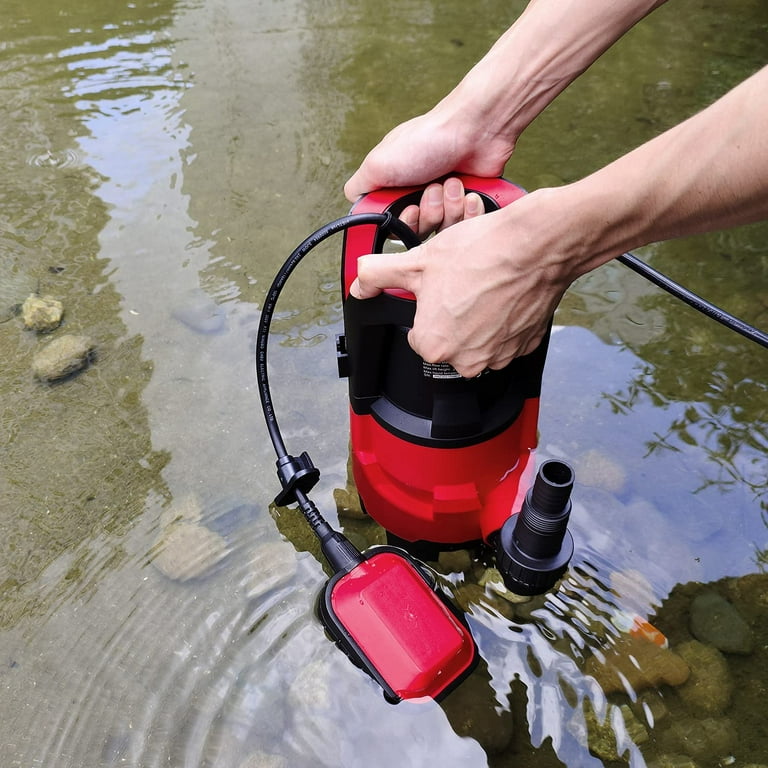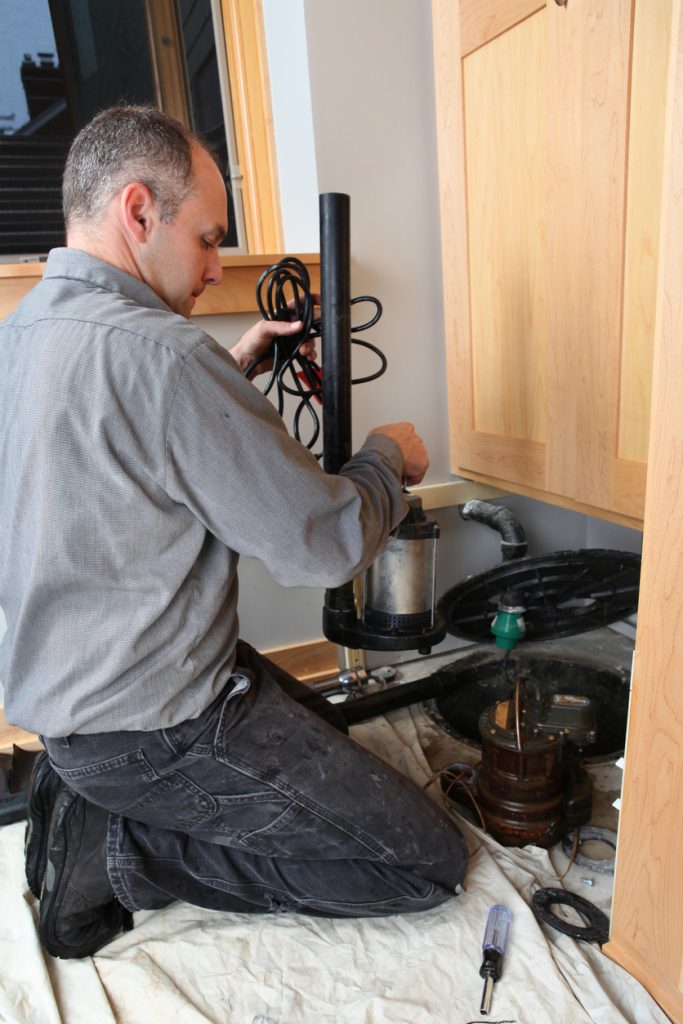Just how do you actually feel when it comes to Cleaning & Maintenance Tips for Your Home's Sump Pump?

Sump pumps are critical components in many homes, especially in locations prone to flooding or excessive wetness. They assist prevent water damages by efficiently removing excess water from cellars or crawl spaces. Nonetheless, like any other device, sump pumps require normal upkeep to guarantee they work properly when needed one of the most. Cleansing your sump pump is a crucial part of its upkeep, and understanding how to do it appropriately can save you from expensive repair work and prospective calamities.
Introduction
Keeping a tidy sump pump is vital for its proper functioning and longevity. Neglecting this important job can lead to obstructions, malfunctions, and ultimately, water damage to your property. Therefore, learning just how to cleanse a sump pump is vital for homeowners who depend on these devices to keep their basements dry and safeguarded.
Indications of a Dirty Sump Pump
Knowing when your sump pump requires cleansing is critical for preventing possible breakdowns. Some usual indications that suggest a filthy sump pump consist of odd sounds throughout operation, decreased water circulation, and noticeable particles in the pit. If you see any one of these symptoms, it's essential to cleanse your sump pump promptly to avoid any further concerns.
Preparing for Cleansing
Before you start cleansing your sump pump, it's important to take some security precautions. Start by turning off the power to the pump to avoid any type of electric accidents. Furthermore, wear appropriate safety gear, such as handwear covers and safety glasses, to secure on your own from dirt, particles, and prospective microorganisms.
Understanding the Sump Pump
Prior to diving right into the cleaning procedure, it's necessary to have a basic understanding of just how a sump pump functions. Typically installed in a pit or basin listed below the cellar floor, a sump pump consists of a number of key elements, including a pump, a float switch, and a discharge pipe. When water collects in the pit, the float button turns on the pump, which then pumps the water out through the discharge pipe, away from the structure's foundation.
Step-by-step Overview to Cleaning a Sump Pump
Shutting Off the Power
Begin by disconnecting the power supply to the sump pump to stop any mishaps while cleaning.
Checking for Appropriate Functioning
Prior to reinstalling the pump, carry out a fast test to make sure that the float switch turns on the pump appropriately. Pour some water into the sump pit and observe the pump's operation. If every little thing is operating appropriately, you can reconstruct the pump and reconnect the power supply.
Eliminating Debris and Dust
Utilize a bucket or a scoop to eliminate any kind of visible particles, dirt, or sediment from the sump pit. Dispose of the particles appropriately to prevent it from obstructing the pump or the discharge pipe.
Cleansing the Pump and Float Change
When the pit is clear of debris, meticulously remove the pump from the pit. Evaluate the pump and the float switch for any type of indicators of damages or wear. Make use of a soft brush or towel to cleanse the surfaces and get rid of any kind of gathered crud.
Purging the System
After cleansing the pump and float button, purge the sump pit with tidy water to remove any type of remaining dust or sediment. This will certainly aid guarantee that the pump operates smoothly and efficiently.
Upkeep Tips to Keep Your Sump Pump Clean
Along with routine cleansing, there are a number of upkeep tips you can comply with to keep your sump pump in optimal problem:
- Regular Inspection: Check your sump pump consistently for any type of signs of wear, damages, or clogs.
- Keeping the Surrounding Location Clean: Ensure that the area around the sump pit is free of particles, dirt, and blockages.
- Examining the Pump Occasionally: Test your sump pump periodically by putting water right into the pit and observing its operation. This will aid you identify any type of potential problems prior to they rise.
Final thought
Cleaning your sump pump is an important facet of its upkeep and makes sure that it operates efficiently when you need it one of the most. By adhering to the steps detailed in this overview and integrating routine maintenance right into your routine, you can extend the life-span of your sump pump and shield your home from water damages.
6 STEPS ON HOW TO CLEAN A SUMP PUMP PROPERLY
UNDERSTANDING SUMP PUMPS
Your sump pump plays a crucial role in protecting your home by managing and removing excess water. It primarily functions as a “shield”, guarding your basement against the damaging effects of water accumulation. The pump is housed in a sump pit in the lowest part of your basement, and its job is to pump out any water that collects there.
During heavy rainfalls or when snow melts rapidly, water can infiltrate your basement, posing potential risks like flooding, structural damage, and harmful mold growth. Here, the sump pump springs into action, pumping out the intruding water and directing it away from your home.
SAFETY FIRST
Before cleaning, remember to prioritize safety. Disconnect the sump pump from the power source to prevent any accidental electric shocks. Also, wear sturdy gloves to protect your hands from any sharp or dirty components within the pump.
REMOVE THE SUMP PUMP
After ensuring your safety, the next step is to remove the sump pump from its pit. Doing this might require careful maneuvering as you don’t want to damage any pump components. Once removed, clean the sump pit to remove any accumulated debris or sludge.
INSPECT THE PUMP
Inspect the pump for any visible signs of wear or damage. Check the power cord, float switch, and impeller housing. If any components look worn out or damaged, consider replacing them to ensure optimal performance.
CLEAN THE PUMP
Thoroughly clean the pump with warm, soapy water. Make sure to rid it of any dirt, gravel, or other debris that might impede its performance. You can use a toothbrush to clean the small, hard-to-reach parts of the pump.
REINSTALL THE SUMP PUMP
- Reinstall the pump into the sump pit
- Make sure it’s positioned correctly to remove the water effectively
- Once it’s back in place, reconnect it to the power source
TEST THE PUMP
Finally, pour some water into the pit to ensure the pump works correctly. It should start automatically and begin pumping out the water; if it doesn’t, check the power source and the positioning of the pump.
Remember, while cleaning your sump pump is an essential part of home maintenance, hiring a professional plumber for a thorough inspection and cleaning at least once a year is also important. This will ensure that your pump is in optimal condition, ready to protect your home from potential water damage.
BEST PRACTICES FOR CLEANING SUMP PUMP DISCHARGE PIPES
- Regular Inspection: Regularly inspect your discharge pipes, especially during heavy rainfall or snowmelt periods. Look for any signs of blockage or damage. Early detection of problems can prevent serious issues down the line.
- Periodic Cleaning: Over time, sediment and debris can accumulate in the discharge pipes, impeding the flow of water. Regular cleaning helps keep the pipes clear and functioning efficiently. You can use a high-pressure water jet to effectively clean the pipes.
- Insulation During Winter: In colder climates, discharge pipes can freeze, blocking the outflow of water. Protect your discharge pipes from freezing temperatures by insulating them with foam pipe insulation. This will ensure the sump pump can continue to discharge water even in freezing conditions.
- Proper Positioning: The discharge pipe should be positioned to direct water away from your home’s foundation. Improper positioning can lead to water seeping back into the basement. Ensure the pipe is long enough and angled correctly.
- Installation of a Check Valve: A check valve prevents water from flowing back into your sump pit after the pump has pushed it out. Installing a check valve helps maintain the efficiency of your sump pump and reduces the risk of flooding.
- Minimize Pipe Turns: Every curve or turn in the discharge pipe can decrease the efficiency of water flow. By minimizing turns and bends in your discharge pipe, you can increase the efficiency of your sump pump.
https://www.fullspeedplumbing.com/how-to-clean-a-sump-pump-properly9999/

As a keen person who reads on Steps to Cleaning Your Sump Pump Properly, I assumed sharing that piece of content was essential. Sharing is caring. One never knows, you may very well be doing someone a favor. Many thanks for going through it.
Call Today
Comments on “An Definitive Guide to Maintaining a Sump Pump”